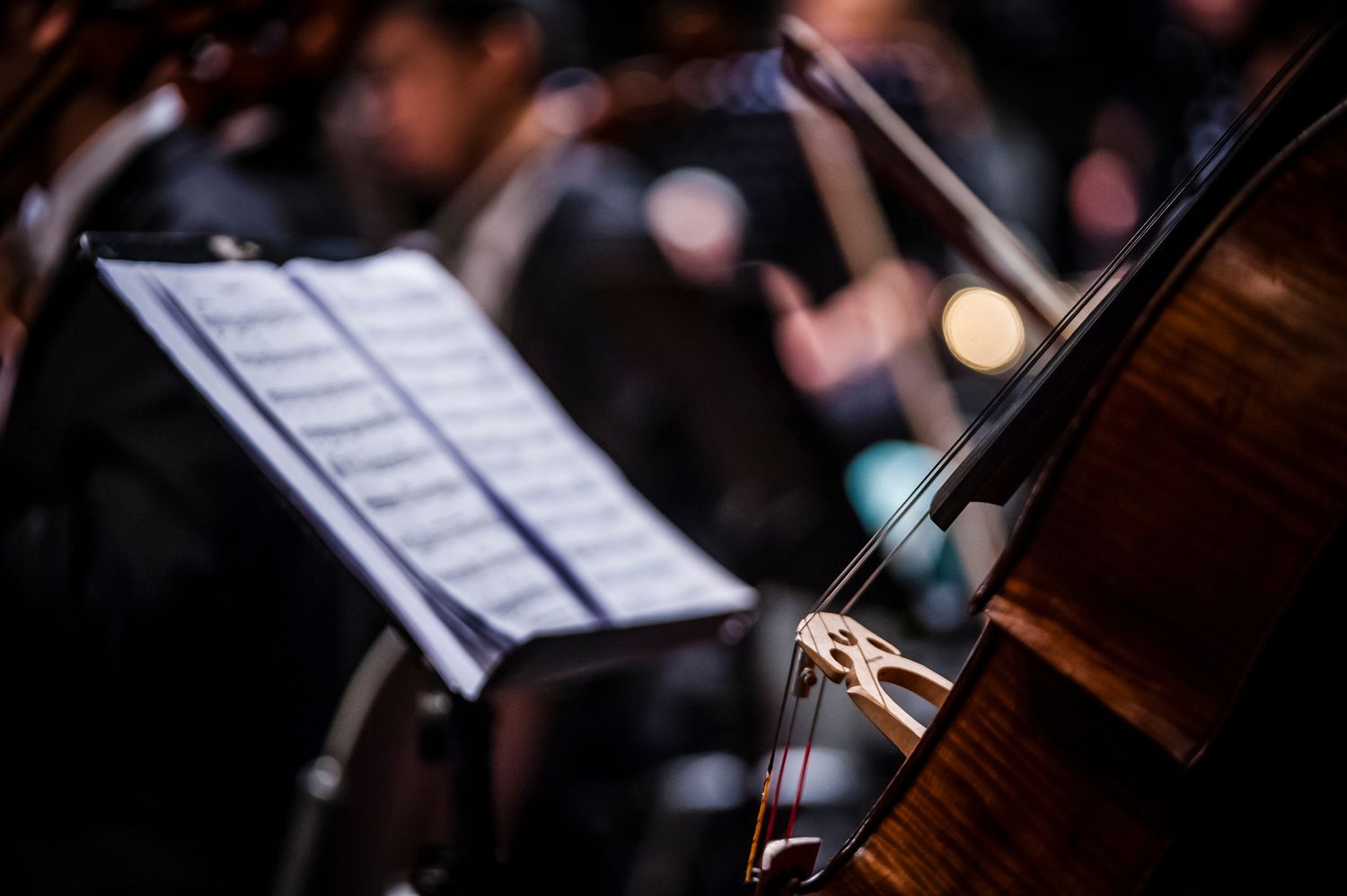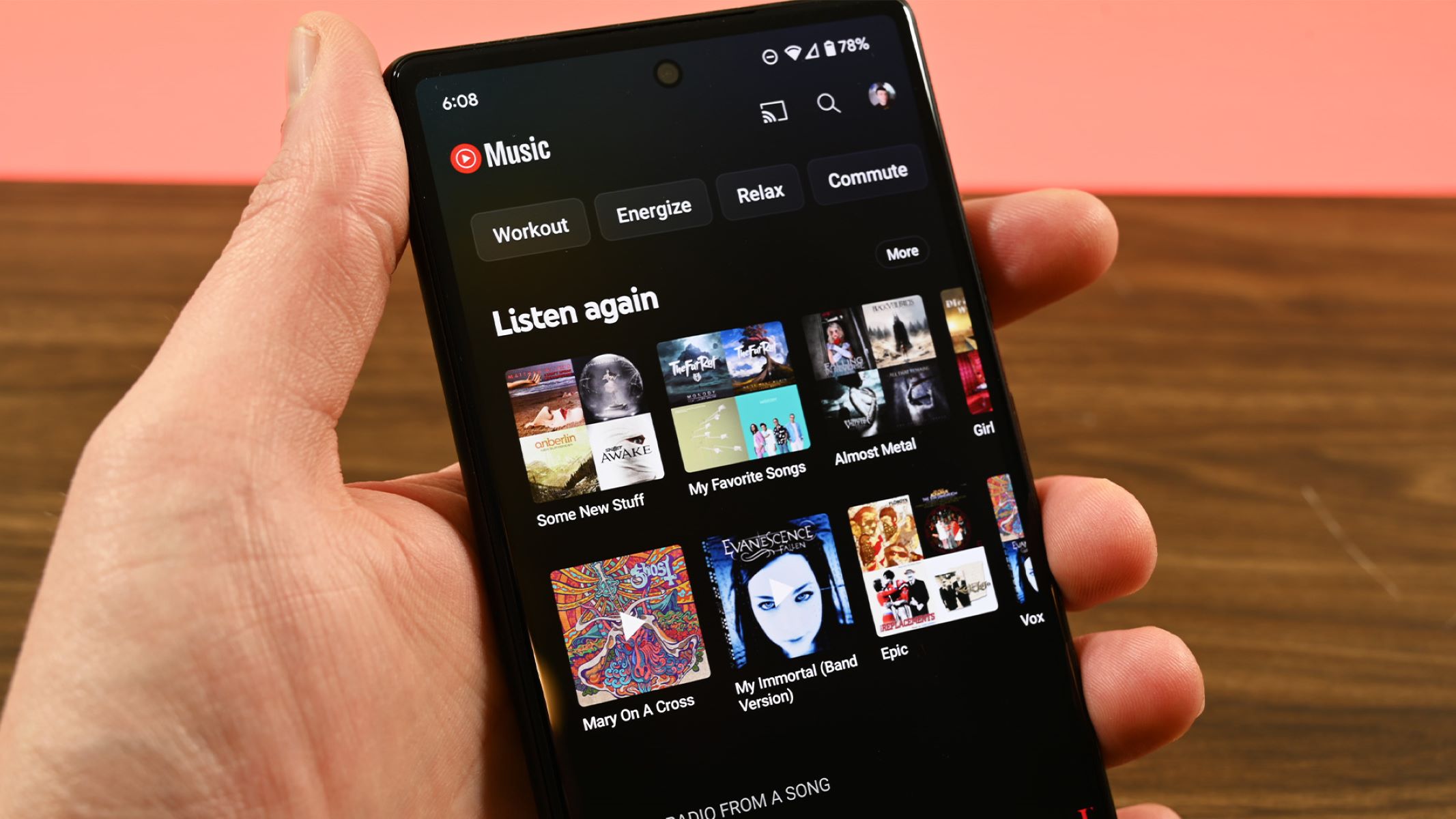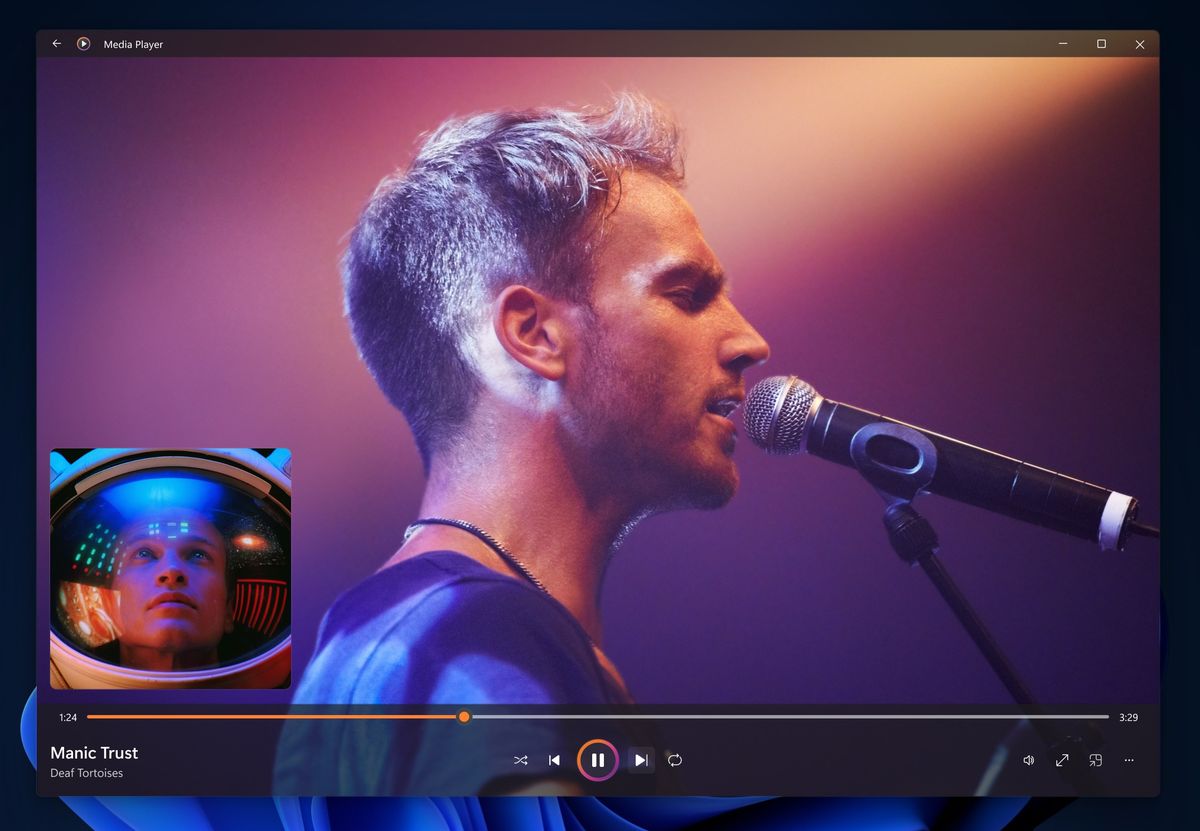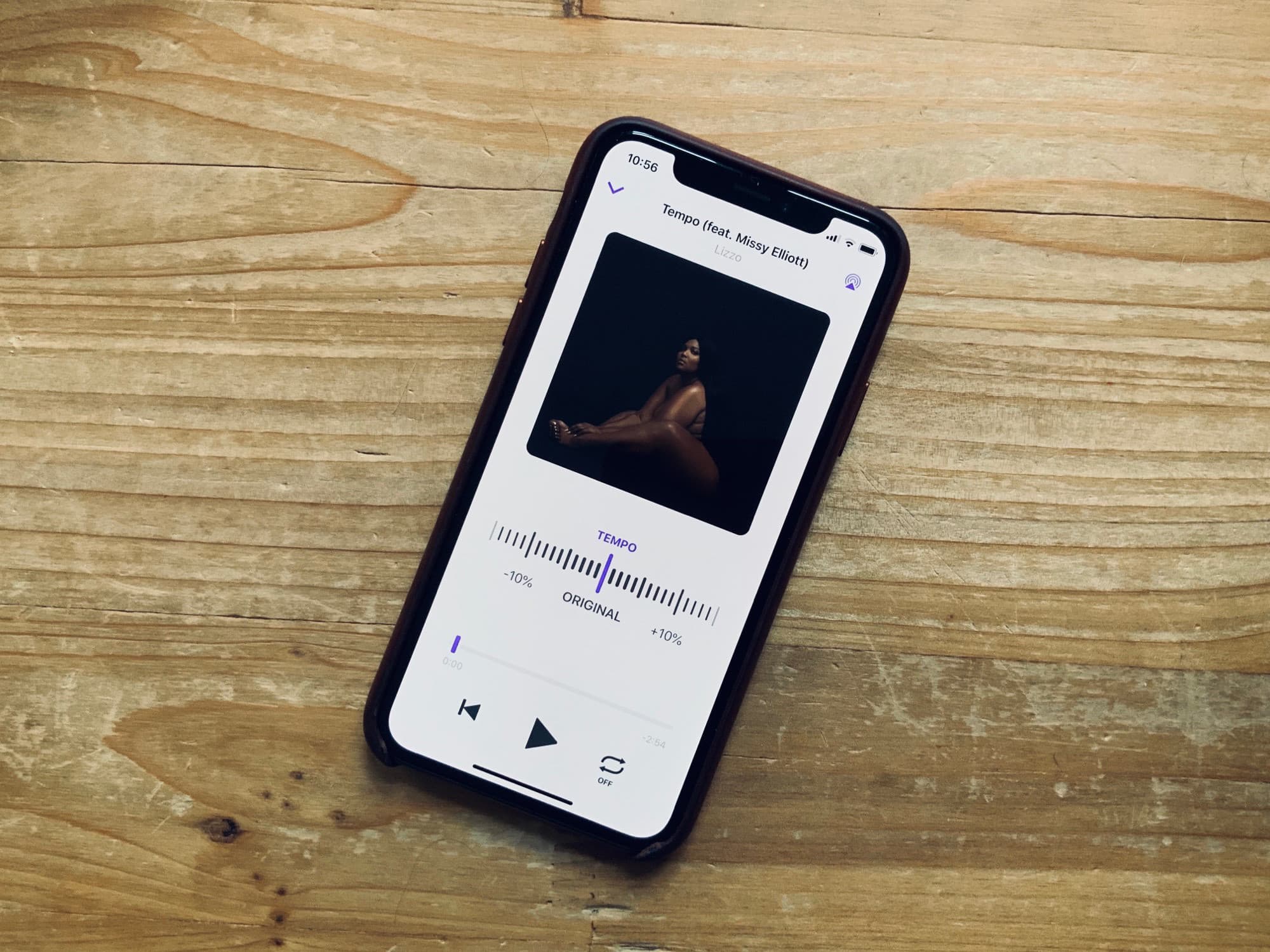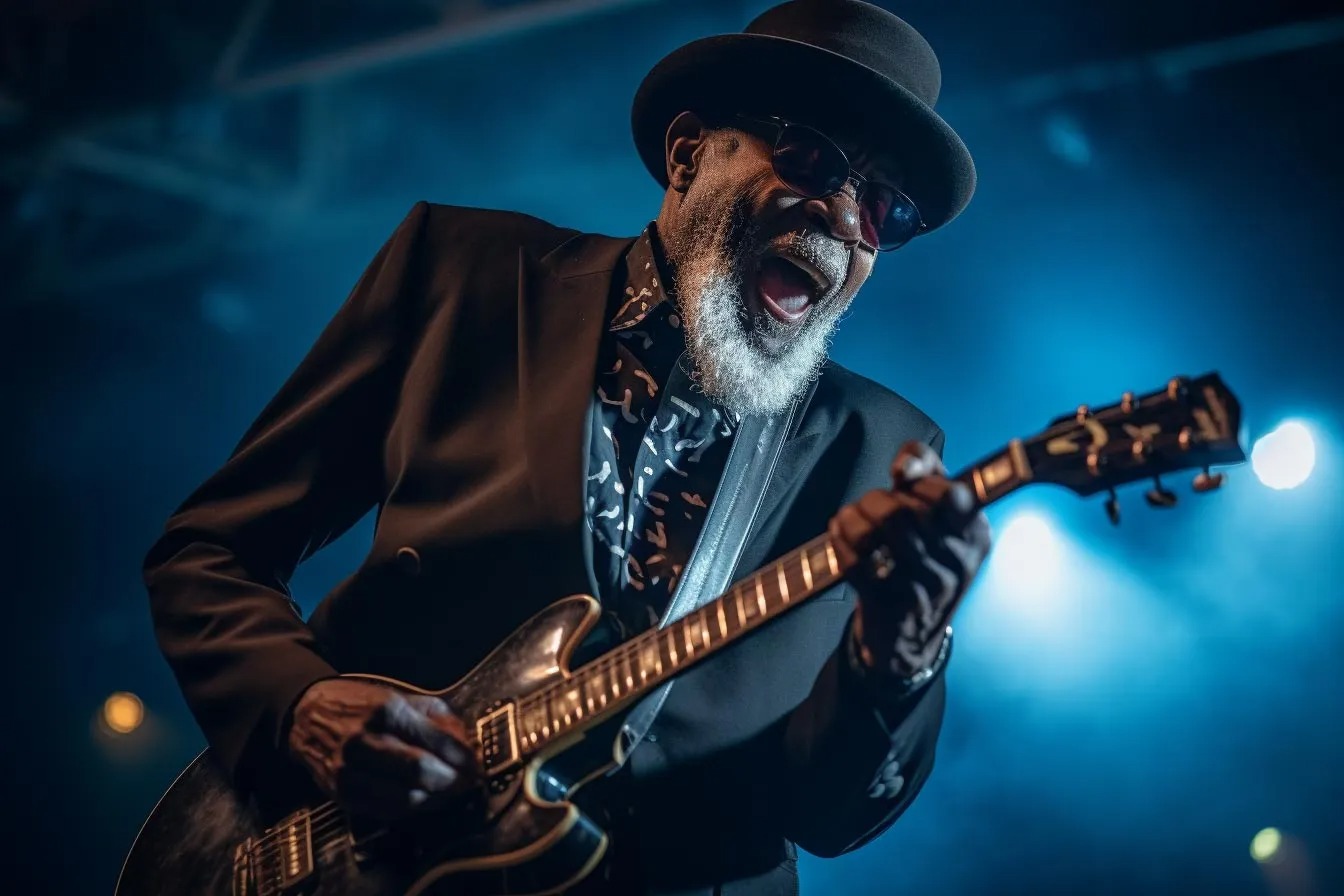Home>Production & Technology>Tempo>What Does A Conductor Use In Music To Keep Tempo
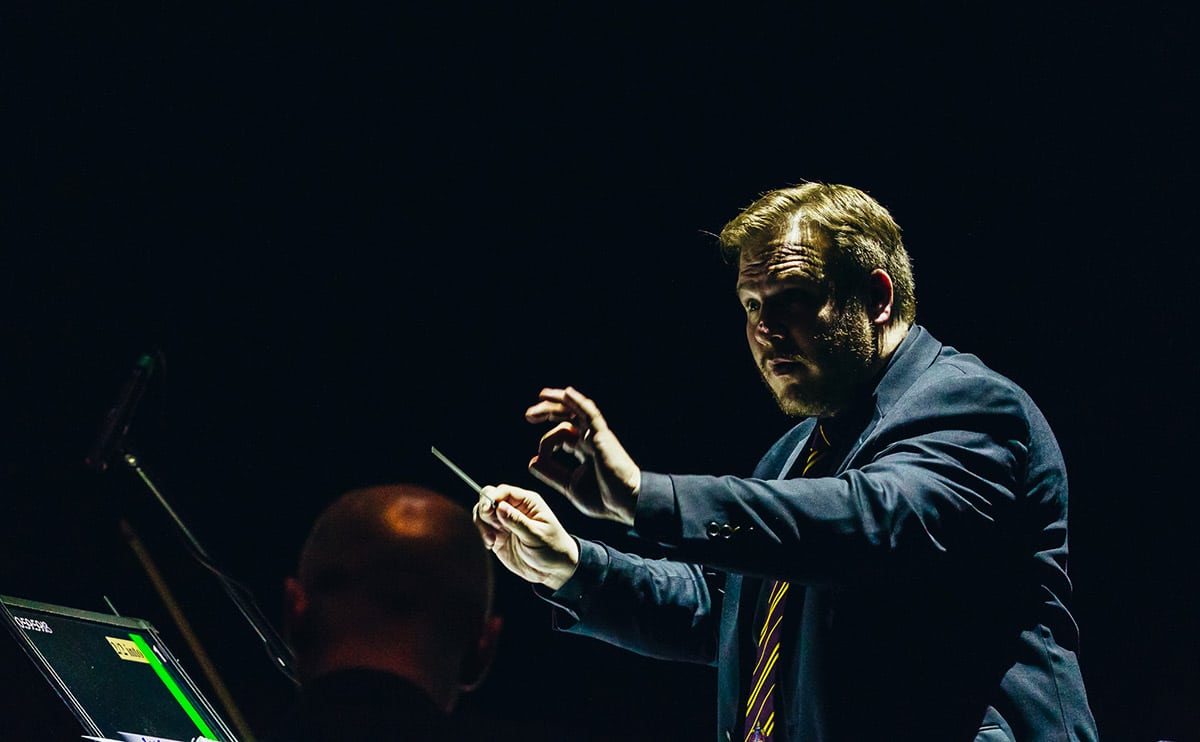

Tempo
What Does A Conductor Use In Music To Keep Tempo
Modified: January 22, 2024
Find out how conductors use various tools and techniques to maintain tempo and ensure musical coherence. Explore the importance and impact of tempo in music.
(Many of the links in this article redirect to a specific reviewed product. Your purchase of these products through affiliate links helps to generate commission for AudioLover.com, at no extra cost. Learn more)
Table of Contents
Introduction
In the world of music, the role of the conductor is crucial in bringing together a group of talented musicians to create a harmonious and captivating performance. The conductor is not only responsible for interpreting the composer’s vision but also for keeping the ensemble in sync and maintaining the desired tempo throughout the piece. But what exactly does a conductor use to keep tempo in music?
In this article, we will explore the techniques and tools employed by conductors to ensure the proper tempo and rhythm of a musical performance. From the iconic baton to hand gestures, facial expressions, and even verbal cues, conductors possess a range of skills and strategies to guide a musical ensemble effectively.
Understanding the significance of tempo in music is key to appreciating the conductor’s role in preserving the essence of a musical composition. Tempo, derived from the Latin word “time,” refers to the speed at which a piece of music is performed. It sets the overall mood and energy of a musical work, influencing the emotional impact it has on the audience. Whether it’s a majestic symphony or an upbeat jazz piece, the conductor’s ability to maintain a consistent and appropriate tempo is essential for a successful performance.
Now, let’s dive into the various techniques and tools employed by conductors to keep tempo in music, ensuring a synchronized and engaging experience for both musicians and listeners alike.
Role of the Conductor in Music
The conductor plays a vital role in bridging the gap between the composer’s intentions and the musicians’ execution. They are the musical leader who guides the ensemble, shapes the interpretation, and ensures cohesion among the musicians. In addition to bringing out the best in each musician, the conductor is responsible for maintaining the tempo, dynamics, and overall musicality of the performance.
One of the primary roles of the conductor is to interpret the composer’s vision and communicate it to the musicians. They study the score, analyze the musical structure, and make interpretative decisions regarding tempo, phrasing, and dynamics to convey the composer’s intentions. Through their knowledge and expertise, conductors breathe life into the music, allowing the musicians to understand and emotionally connect with the piece.
Another crucial aspect of the conductor’s role is to maintain ensemble cohesion. They listen attentively to each section and individual instrument, ensuring that all musicians play together harmoniously. The conductor acts as a unifying force, balancing the different sections, and ensuring that the musical performance is coherent and aligned.
Furthermore, the conductor is responsible for setting the tempo and ensuring its consistency throughout the performance. They determine the speed at which the piece is played, considering factors such as historical conventions, the style of the composition, and the overall artistic interpretation. The conductor’s ability to convey the desired tempo to the musicians is vital for a synchronized and cohesive performance.
Overall, the conductor is the glue that holds the music together. They provide guidance, interpretation, and direction to the ensemble, elevating the performance to its fullest potential. By effectively communicating the composer’s vision and maintaining tempo and cohesion, the conductor ensures a seamless musical experience for both the musicians and the audience.
Importance of Tempo in Music
Tempo is a fundamental element of music that greatly influences the overall impact and emotional expression of a composition. It sets the pace, energy, and rhythm of the music, shaping the listener’s experience and providing a framework for the musicians to follow. Understanding the importance of tempo is crucial in appreciating the role of the conductor in maintaining its consistency throughout a performance.
Firstly, tempo serves as the musical heartbeat, establishing the underlying rhythm and providing a sense of continuity. It determines the speed at which the music unfolds and sets the mood of the piece. Whether it’s a brisk Allegro, a solemn Adagio, or an exciting Presto, the tempo directs the overall atmosphere and emotional intensity of the music.
Furthermore, tempo creates a sense of unity and coherence among the musicians. It ensures that they are all moving together in synchronization, creating a cohesive ensemble performance. When the tempo is well-maintained and consistent, it allows each musician to anticipate and respond to the music in real-time, fostering a sense of musical connection and synergy.
Tempo also impacts the interpretation of the music and the way it is perceived by the audience. A slight change in tempo can evoke different emotional responses and alter the overall character of the piece. For example, a slower tempo can create a sense of introspection and contemplation, while a faster tempo can generate excitement and exhilaration.
Moreover, tempo serves as a crucial tool for conveying the expressive nuances and intentions of the composer. A skilled conductor understands how to utilize tempo variations to highlight important musical phrases, emphasize climactic moments, and create dynamic contrasts. By effectively controlling the tempo, conductors can shape the overall musical narrative and enhance its dramatic impact.
Ultimately, tempo is the pulse that guides the musical performance and ensures a cohesive and captivating experience for both the musicians and the audience. It is through the conductor’s careful control and maintenance of the tempo that the true essence of the music can be realized, allowing for a powerful and emotionally resonant performance.
Techniques Used by Conductors to Keep Tempo
Conductors employ a variety of techniques to effectively control and maintain tempo during a musical performance. These techniques ensure that the musicians stay in sync, follow the conductor’s musical direction, and create a cohesive and synchronized ensemble. Let’s explore some of the most common techniques used by conductors to keep tempo:
- Use of Baton: The conductor’s most iconic tool is the baton. By wielding the baton with precise movements, conductors establish and communicate the desired tempo to the ensemble. The baton not only provides a visual cue but also creates a clear physical reference point for the musicians to follow.
- Hand Gestures and Facial Expressions: Conductors use their hands, fingers, and facial expressions to convey specific instructions and cues to the musicians. Movements such as upward and downward gestures indicate changes in dynamics and tempo, while facial expressions can communicate nuances of interpretation.
- Eye Contact with Musicians: Conductors maintain eye contact with the musicians, particularly section leaders, to give specific instructions or cues. Through eye contact, conductors can convey tempo changes, entries, cutoffs, and other important musical directives, ensuring a coordinated performance.
- Body Movement and Physical Gestures: Conductors utilize their entire body, including body sways, nods, and even dance-like movements, to express the desired musical expression and maintain tempo. These physical gestures provide an additional layer of communication and inspire the musicians in their performance.
- Verbal Cues and Vocalizations: In some instances, conductors use verbal cues and vocalizations to convey specific instructions to the musicians. They may use words or syllables to represent different musical phrases or rhythmic patterns, aiding in tempo maintenance and ensuring rhythmic precision.
These techniques, when combined and used skillfully, enable conductors to guide the ensemble and maintain a consistent and accurate tempo. It is through the masterful implementation of these techniques that conductors provide musical leadership and create a synchronized and captivating performance.
Use of Baton in Tempo Control
The baton is one of the most iconic tools used by conductors to control and maintain tempo during a musical performance. It serves as a visual and physical guide for the musicians, allowing the conductor to communicate the desired tempo with precision and clarity.
The baton, typically a thin stick made of wood or other lightweight material, is held in the conductor’s dominant hand. With an upward or downward motion of the baton, conductors can indicate changes in tempo, dynamics, and other musical cues to the ensemble.
One significant advantage of using a baton is that it provides a clear visual cue for the musicians. When the baton is raised, it signals an upcoming change in tempo or dynamic, prompting the musicians to prepare for the transition. Conversely, when the baton is lowered, it indicates a return to the established tempo or a decrease in volume.
In addition to visual guidance, the baton also offers a physical reference point for the musicians to follow. Its movements help establish a synchronized pulse and rhythm, ensuring that the ensemble stays together and maintains a cohesive performance.
Furthermore, the length and weight of the baton contribute to the conductor’s control over tempo. A longer baton allows for broader gestures, which can be particularly useful in indicating larger tempo changes or conducting larger ensembles. Conversely, a lighter baton enables quick and precise movements, ideal for intricate or rapid tempo adjustments.
While the baton is a powerful tool for tempo control, it is important to note that it is not the sole means of communication between the conductor and the musicians. Conductors use a combination of hand gestures, facial expressions, body movement, and other techniques to convey musical direction and interpretation. The baton is just one component of the conductor’s toolkit, albeit a highly recognizable one.
To truly master the use of the baton in tempo control, conductors must possess a deep understanding of the music, the desired musical expression, and effective communication techniques. Through their skillful manipulation of the baton, conductors create a musical dialogue with the musicians, ensuring a synchronized and captivating performance.
Hand Gestures and Facial Expressions
In addition to the use of a baton, conductors rely on hand gestures and facial expressions to convey specific musical instructions and maintain tempo during a performance. These non-verbal cues add depth and clarity to the conductor’s communication with the ensemble, enhancing their understanding and synchronization.
Hand gestures play a vital role in expressing different musical elements, such as dynamics, phrasing, and articulation. Conductors use a range of gestures to communicate these nuances to the musicians. For example, an upward sweep of the hand indicates a crescendo, while a downward gesture suggests a decrescendo. Conductors may also use circular motions of the hand to indicate phrasing or indicate a staccato or legato articulation through their finger movements.
Facial expressions, although subtle, contribute significantly to the conductor’s communication. The conductor’s face can convey emotions, nuances, and overall musical interpretation to the musicians. A raised eyebrow or a slight smile may express appreciation or encouragement, while a furrowed brow can indicate a need for greater focus or intensity. By using facial expressions in conjunction with gestures, conductors convey the desired musical expression and help maintain the tempo.
Close attention to the conductor’s hand gestures and facial expressions is crucial for the musicians to stay synchronized and respond to changes in the music. The conductor’s cues guide the musicians through complex passages, dynamics, and tempo fluctuations, ensuring a cohesive and unified performance.
While hand gestures and facial expressions are vital tools, conductors must also be mindful of their clarity and consistency. Conductor training emphasizes the development of standardized gestures and expressions to ensure consistency across performances and ensembles. This allows musicians who have not worked with a specific conductor before to adapt quickly to their style of communication.
It is worth mentioning that different conductors may have unique gestures and expressions that reflect their personal interpretation and style. Therefore, musicians may need time to become familiar with a particular conductor’s gestures and facial expressions.
Ultimately, the effective use of hand gestures and facial expressions by conductors enhances the communication between the conductor and the ensemble. Through these non-verbal cues, conductors bring clarity, precision, and emotion to their direction, resulting in a cohesive, synchronized, and musically expressive performance.
Eye Contact with Musicians
Eye contact is a powerful tool that conductors use to establish a connection and communicate with the musicians during a performance. By maintaining eye contact, conductors can convey important musical cues, give subtle instructions, and facilitate a seamless and synchronized ensemble.
When a conductor makes eye contact with a musician, it serves as a direct and personal form of communication. It allows conductors to give specific cues for entries, cutoffs, and tempo changes. For example, a conductor may indicate a musical entrance by making eye contact with the corresponding musician or section leader, ensuring a coordinated and precise entrance.
Eye contact also allows conductors to provide feedback and guidance during a performance. By observing the musicians’ expressions and body language, conductors can gauge their understanding of the music and make real-time adjustments if necessary. They can convey subtle instructions through eye movements, helping musicians shape their phrasing, dynamics, and overall musical expression.
Moreover, eye contact fosters a sense of connection and collaboration within the ensemble. When conductors establish eye contact with musicians, it encourages them to be attentive, responsive, and engaged in the performance. Musicians feel seen and acknowledged, which contributes to a sense of unity and a shared musical vision.
While the conductor’s primary focus is on maintaining eye contact with section leaders and key musicians, they also make deliberate eye contact with the entire ensemble. This inclusive approach ensures that every musician feels involved and connected to the collective performance. It fosters a sense of trust and allows for a dynamic and synchronized musical experience.
It is important to note that effective eye contact requires a balance. Conductors must find the right moments to establish eye contact without becoming overly distracted. They must strike a balance between connecting with the musicians and maintaining their overall conducting technique and control of the performance.
In summary, eye contact is a critical aspect of communication between conductors and musicians. It allows conductors to provide specific cues, give feedback, and establish a sense of collaboration and unity within the ensemble. Through meaningful eye contact, conductors create a dynamic and synchronized musical experience that engages both the performers and the audience.
Body Movement and Physical Gestures
Body movement and physical gestures are key components of a conductor’s toolkit when it comes to leading and maintaining tempo during a musical performance. Conductors use their entire bodies to convey the desired musical expression, energy, and direction to the ensemble, creating a visual and kinesthetic connection with the musicians.
One of the primary ways conductors use body movement is through swaying and gesturing with their entire body. This movement conveys the overall flow and phrasing of the music to the musicians, providing a sense of momentum and direction. Conductors may sway in time with the music, emphasizing certain beats or melodic lines, and encouraging the musicians to internalize the pulse of the piece.
In addition to swaying, physical gestures play a significant role in shaping the interpretation and maintaining the tempo. Conductors use their arms, hands, and fingers to make specific gestures that indicate changes in dynamics, articulation, and tempo. For example, a sweeping motion with the arms may emulate the rising and falling of a crescendo, while a crisp and precise finger movement may indicate a staccato articulation.
Physical gestures also serve as visual cues for the musicians, providing them with clear directions and cues for entries, cutoffs, and other important musical events. Conductors may use large, expansive gestures to indicate grandiose musical moments or employ subtle, precise movements for delicate passages. These gestures guide the musicians and help them stay synchronized, ensuring a cohesive and unified performance.
Furthermore, body movement and physical gestures contribute to the conductor’s overall stage presence and charisma. Conductors who exude passion and energy through their body language can inspire and motivate the musicians to deliver their best performance. The physicality of the conductor’s movements can also engage and captivate the audience, enhancing the overall musical experience.
It is important for conductors to strike a balance between controlled and intentional body movement and avoiding excessive or distracting gestures. Conductors receive training to develop a clear and consistent gestural vocabulary that effectively communicates their musical intent while maintaining a professional conducting technique.
In summary, body movement and physical gestures are powerful communication tools that conductors use to convey musical expression, direction, and tempo. Through swaying, gesturing, and employing specific movements, conductors lead the ensemble and create a visual and kinesthetic connection with the musicians. These gestures provide clear cues, guide the ensemble’s synchronization, and enhance the overall musical experience for both performers and audience members.
Verbal Cues and Vocalizations
In addition to non-verbal communication techniques like hand gestures and body language, conductors sometimes use verbal cues and vocalizations to convey specific instructions and maintain tempo during a musical performance. Verbal cues and vocalizations serve as additional tools for conducting, enabling conductors to provide immediate and precise guidance to the musicians.
Verbal cues refer to the use of words or syllables to represent musical phrases, rhythms, or specific musical elements. By vocalizing these cues, conductors can convey the desired interpretation and timing to the musicians. For example, a conductor might use simple vocalizations like “ta,” “dee,” or “dah” to indicate rhythm or rhythmic subdivisions. These cues help ensure that the musicians maintain a synchronized approach to rhythm and timing.
In addition to verbal cues, conductors sometimes use verbal instructions during rehearsals or performances to provide specific guidance to the musicians. They may use words or short phrases to convey ideas like “more legato,” “softly,” or “with energy.” Verbal instructions allow conductors to express musical concepts and preferences that may be harder to communicate through gestures alone.
However, it is important to note that the use of verbal cues and vocalizations should be done sparingly and thoughtfully. Conductors must strike a balance between using verbal cues for precision and clarity while allowing the music to speak for itself. Over-reliance on verbal instructions may disrupt the flow of the performance or distract the musicians from their focus on the music.
The effectiveness of verbal cues and vocalizations lies in their ability to complement the non-verbal communication methods used by conductors. They are employed in conjunction with gestures, facial expressions, and other techniques to provide a multi-dimensional approach to musical communication.
Ultimately, verbal cues and vocalizations in conducting provide an additional means of communication for conductors to convey musical intent, maintain tempo, and guide the ensemble. When used selectively and in harmony with other communication techniques, they enhance the conductor’s ability to shape the musical performance and ensure a cohesive and synchronized experience for both the musicians and the audience.
Conclusion
Keeping tempo in music is a core responsibility of the conductor, and they employ a range of techniques and tools to ensure the consistent and precise performance of a musical composition. From the iconic baton to hand gestures, facial expressions, eye contact, body movements, verbal cues, and vocalizations, conductors have a diverse array of tools at their disposal.
The conductor’s role in music extends far beyond tempo control. They interpret the composer’s vision, shape the performance, and guide the ensemble to create a captivating musical experience. Tempo, as a fundamental element of music, sets the mood, energy, and emotional impact of a piece, making it essential for conductors to maintain its integrity.
The use of a baton provides a visual and physical reference point for musicians, while hand gestures and facial expressions convey specific musical instructions and nuances. Eye contact between the conductor and the musicians establishes a direct connection and enables cues and feedback to be conveyed in real-time.
Body movement and physical gestures bring the music to life, with conductors using their entire bodies to communicate the desired musical expression, direction, and energy. Verbal cues and vocalizations add another layer of communication, allowing conductors to provide immediate and precise instructions during rehearsals and performances.
In conclusion, the conductor’s ability to keep tempo is paramount in creating a cohesive, synchronized, and compelling musical performance. Through the skilled use of techniques and tools such as the baton, hand gestures, facial expressions, eye contact, body movement, verbal cues, and vocalizations, conductors guide and unite the ensemble, breathing life into the music and elevating the overall musical experience.

